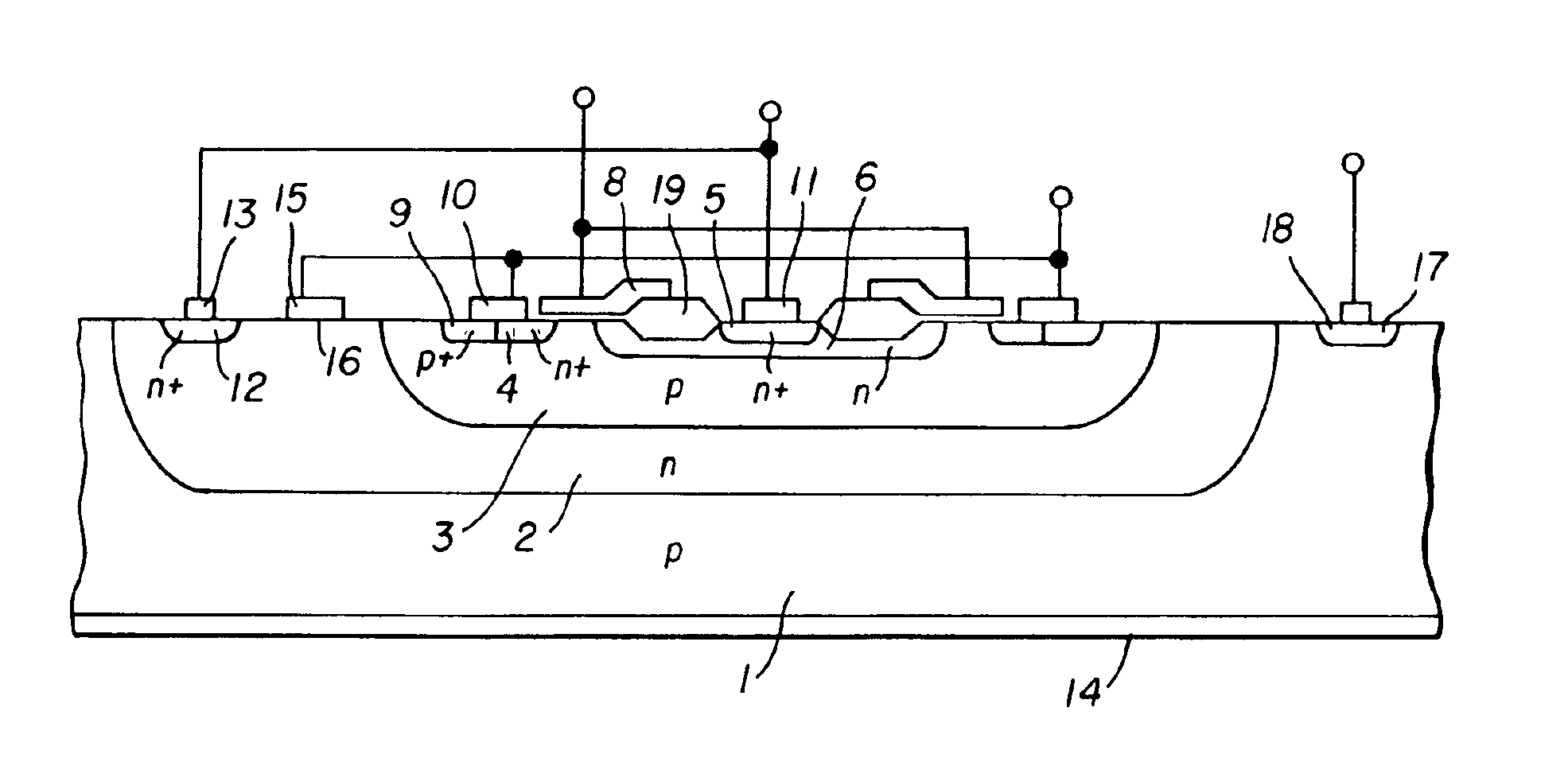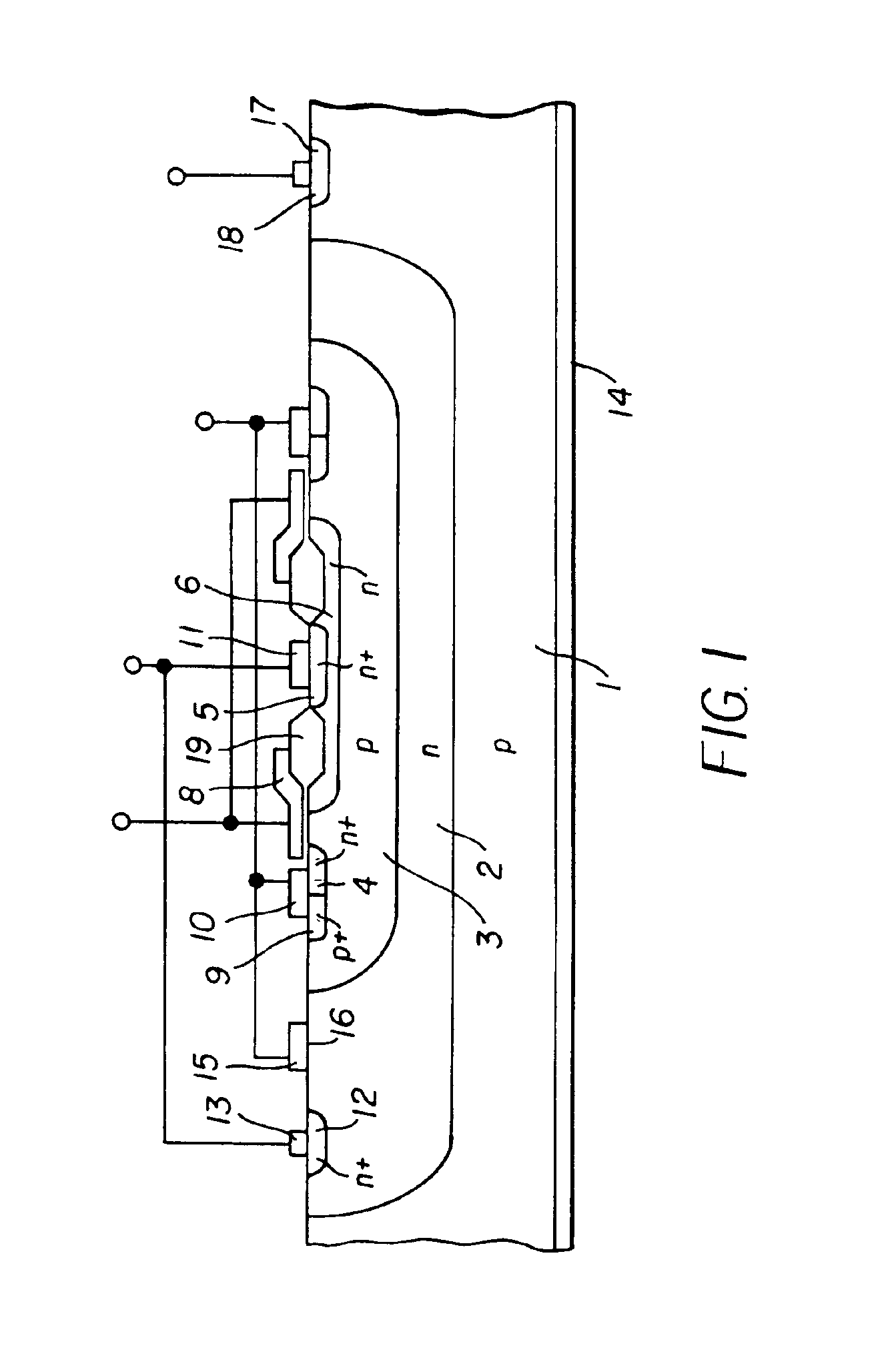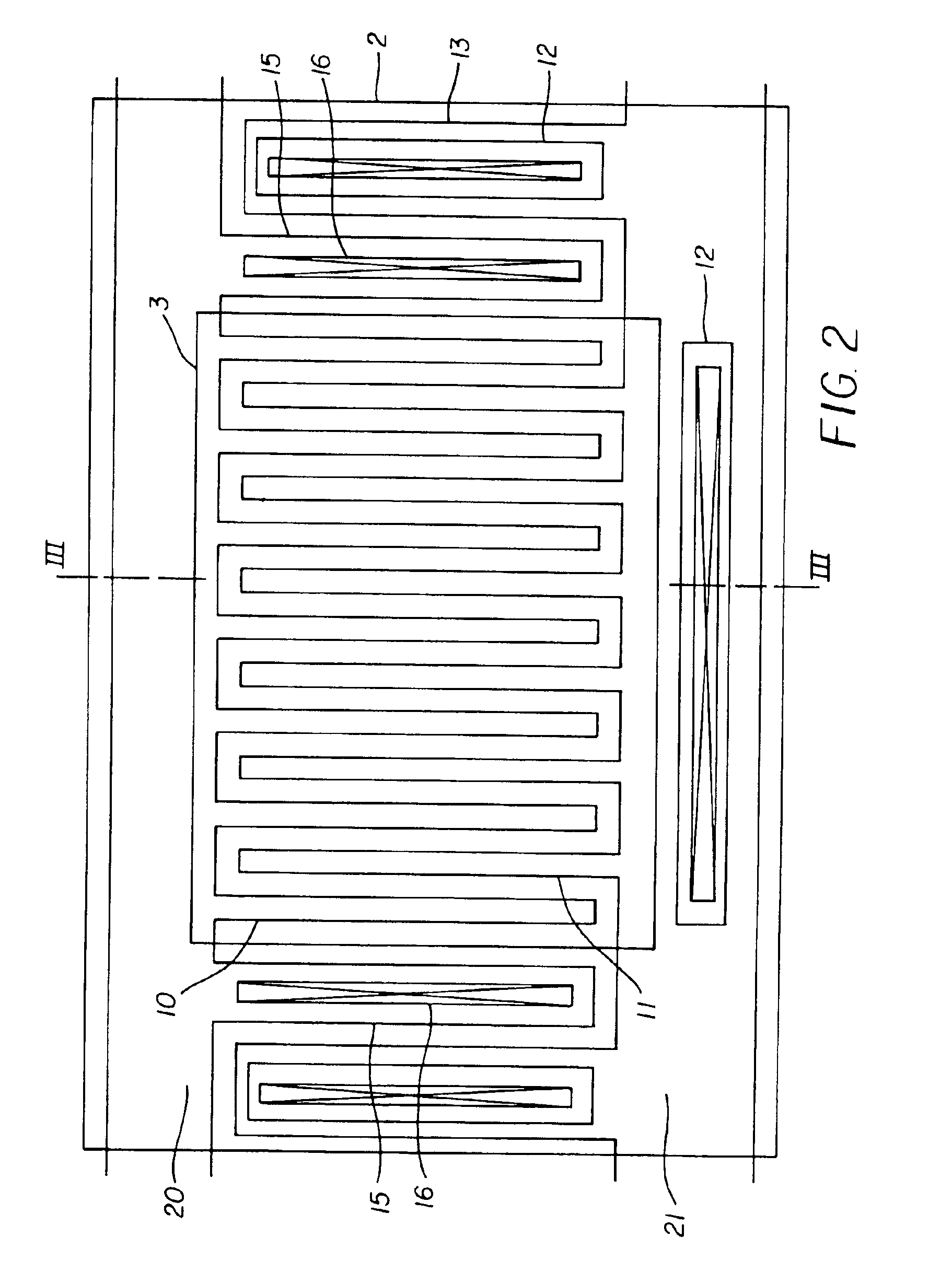High power semiconductor device having a Schottky barrier diode
a technology of schottky barrier and semiconductor device, which is applied in the direction of semiconductor devices, diodes, electrical devices, etc., can solve the problems of easy latching up, easy damage of element, and easy occurrence of problems, so as to prevent damage to elements and/or miss operation, suppress parasitic effects, and prevent damage to elements
- Summary
- Abstract
- Description
- Claims
- Application Information
AI Technical Summary
Benefits of technology
Problems solved by technology
Method used
Image
Examples
first embodiment
FIG. 1 is a cross-sectional constructional view illustrating the concept of a MOSFET incorporating a Schottky barrier diode according to the present invention. The difference between FIGS. 1 and 9 is that FIG. 1 has an anode electrode 15 formed at the surface of the n well region 2 and a Schottky junction 16 formed at the interface with the n well region 2. In this embodiment, the n well electrode 13 formed on the n+ contact region 12 is connected with the drain electrode 11 and the anode electrode 15 is connected with the source electrode 10, respectively, by means of wiring, so the Schottky barrier diode constituted by the anode electrode 15 and the n well region 2 is connected in parallel with the PN junction constituted by the p well region 3 and the drain region 5 (through the n offset region 6), so that the base current of the parasitic transistor is bypassed by the Schottky barrier diode, thereby making it possible to suppress the parasitic transistor effect. It should be not...
second embodiment
FIG. 4 is a plan constructional view of a MOSFET incorporating a Schottky barrier diode according to the present invention and FIG. 5 is a cross-sectional view along the line V—V of FIG. 4. The points of difference between this FIG. 4 and FIG. 5 with regard to FIG. 2 are that the Schottky junction 16 is formed directly below the region of the source current collector electrode 20 and that an n+ contact region 12a is provided in the vicinity of the source current collector electrode 20, being directly connected with the drain electrode at a tip portion thereof constituted by extending the drain electrode 11 from the drain current collector electrode 21. Since the source current collector electrode or drain current collector electrode must collect and allow passage of current from a large number of MOSFET cells, its wiring must be made comparatively wide. Consequently, if a Schottky barrier diode that requires a comparatively large area is formed in the region of such a source current...
fourth embodiment
FIG. 7 is a cross-sectional constructional view illustrating the concept of a Schottky barrier diode according to the present invention, in which an n well region 2 is formed at the surface of the p type semiconductor substrate 1 and, in addition, a p well region 3 is formed at the surface of the n well region 2. An n offset region 6 is formed at the surface of the p well region 3 and at the surface thereof there are formed an anode electrode 15 and cathode electrode 24, separated by a prescribed distance depending on the voltage-withstanding ability. The anode electrode 15 forms the n offset region 6 and the Schottky junction 16, and directly below the cathode electrode 24 there is formed an n+ cathode region 25 for forming an ohmic contact with the cathode electrode 24. Also, at the surface of the n offset region 6, which is sandwiched by the anode electrode 15 and cathode electrode 24, a LOCOS oxide film 19 and a polysilicon field plate 26 are formed with the object of moderating...
PUM
 Login to View More
Login to View More Abstract
Description
Claims
Application Information
 Login to View More
Login to View More - R&D
- Intellectual Property
- Life Sciences
- Materials
- Tech Scout
- Unparalleled Data Quality
- Higher Quality Content
- 60% Fewer Hallucinations
Browse by: Latest US Patents, China's latest patents, Technical Efficacy Thesaurus, Application Domain, Technology Topic, Popular Technical Reports.
© 2025 PatSnap. All rights reserved.Legal|Privacy policy|Modern Slavery Act Transparency Statement|Sitemap|About US| Contact US: help@patsnap.com



